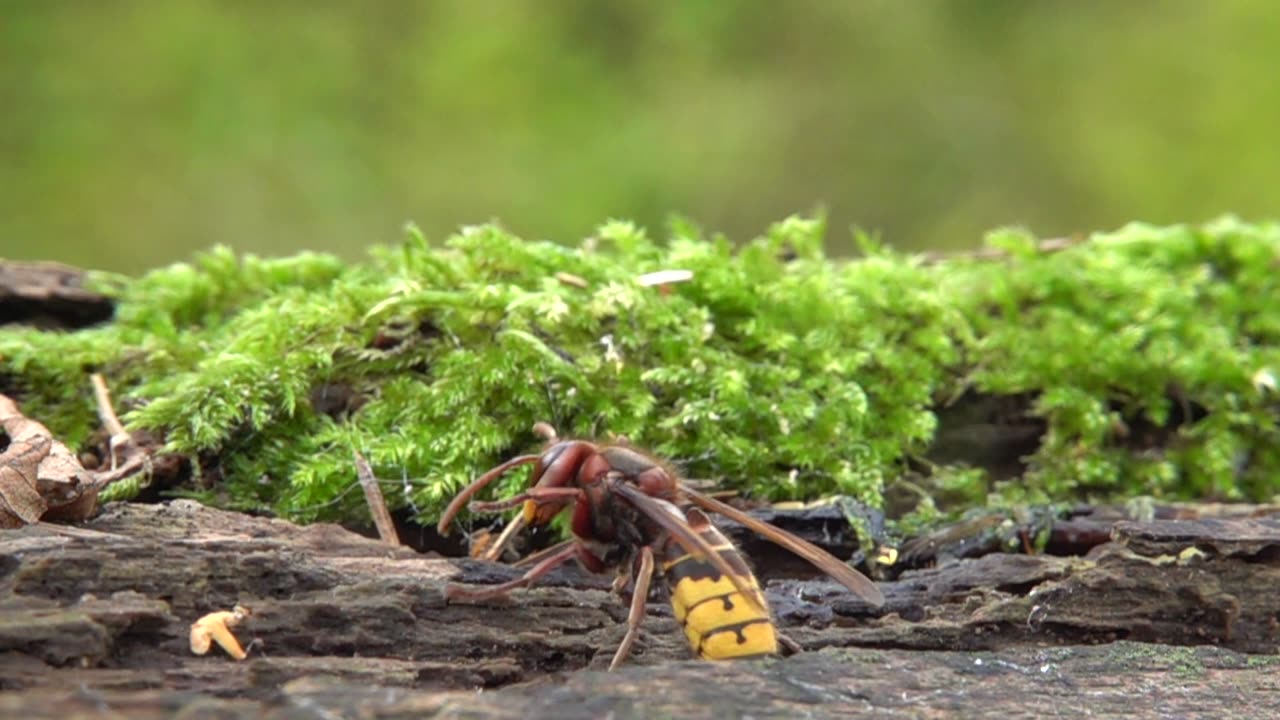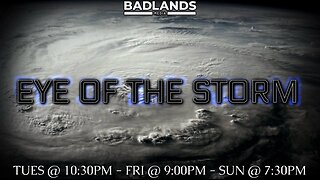Premium Only Content

Hornets and Wasps Battle in Slow Motion
Occurred on September 6, 2018 / Dohr, Germany
Info from Licensor: "Last summer I also spent time observing, photographing and filming social wasps in my garden in Dohr (in the Eifel region) in Rhineland-Palatinate, Germany. I spent hundreds of hours observing and arranging until the animals got used to me (and I got used to them) and then I managed to take some extraordinary pictures.
Wasps and hornets gather at a drinking trough filled with water or sugar water and enjoy drinking the energizing liquid. Various species gather here, especially in the fall, when the insect colonies are slowly approaching their annual end and the last workers have already hatched.
The largest and dominant species is the hornet. Like all social wasps, it feeds its larvae with animal protein, which it normally obtains by hunting other insects. Smaller wasps are easy and popular prey for hornets. They catch them at a feeding site or in flight. When hunting in flight, the hornets spread their legs to form a kind of catching basket and grab the bees with their strong, powerful mouthparts, the mandibles. They then often land with them on a thin branch and hang themselves there with one leg. They use their other legs to fixate the prey and bite off the bee's head, then its wings and extremities. The abdomen is also bitten off and dropped. Only the middle body segment with the flight muscles is utilized. It is chewed into a food pulp. The hornet then flies to its nest and feeds the food mash to its larvae.
This is why hornets are welcome guests in the garden or on the patio for nature lovers, as there are usually fewer of the annoying little wasps to put up with.
Photographing and filming this hunt is anything but easy and requires a lot of experience. Many nature lovers have observed this hunt before. But you just don't know beforehand when and where it will take place. The hunt itself only lasts a few seconds before the hornet flies off with its prey. In this very short time, the camera has to be positioned, the right parameters have to be set, the light and location have to be right and you have to react quickly enough. It took me many years and hundreds of hours of observation before I was able to film such scenes.
But in the meantime I have managed to capture many such shots, which can be seen on my YouTube channel. My shots are often bought up by film and TV productions, as only a few nature photographers specialize in this and many of my shots are unique."
-
 6:21:08
6:21:08
Odd Man Out
10 hours agoLet's play the overlooked absolute GEM of a game, Saint's Row IV
78.4K4 -
 8:00:07
8:00:07
SpartakusLIVE
12 hours agoDuos w/ Woes || Friday Night HYPE
44.7K3 -
 8:05:10
8:05:10
CHiLi XDD
10 hours agoPart 2 F Em UP Friday!
51.2K3 -
 5:14:28
5:14:28
FreshandFit
10 hours agoCall-In Show
72.6K23 -
 3:00:07
3:00:07
JustPearlyThings
10 hours agoWhy Do Modern Women Think Disrespecting Their Husbands Publicly Is Funny? Call-In Show | Pearl Daily
82.9K29 -
 1:35:17
1:35:17
Badlands Media
1 day agoEye of the Storm Ep. 241
97K38 -
 2:05:58
2:05:58
TimcastIRL
11 hours agoTrump Just REVOKED Legal Status Of 530,000 Migrants, Deportations NOW w/ Alex Stein | Timcast IRL
207K302 -
 3:39:01
3:39:01
I_Came_With_Fire_Podcast
15 hours agoCHINA MILITARY PURGE | TESLA OWNERS DOXXED | NGAD F-47
50.8K16 -
 5:44:43
5:44:43
Shield_PR_Gaming
15 hours agoSome Gray Zone Warfare with Followers & more games!
69.8K3 -
 31:38
31:38
Michael Franzese
11 hours agoTony Accardo: The Genius That Built Chicago’s Most Powerful Empire
70.2K4